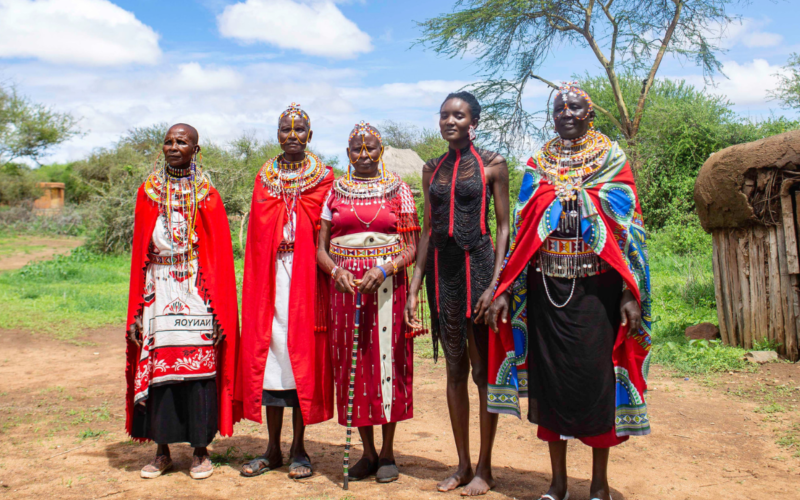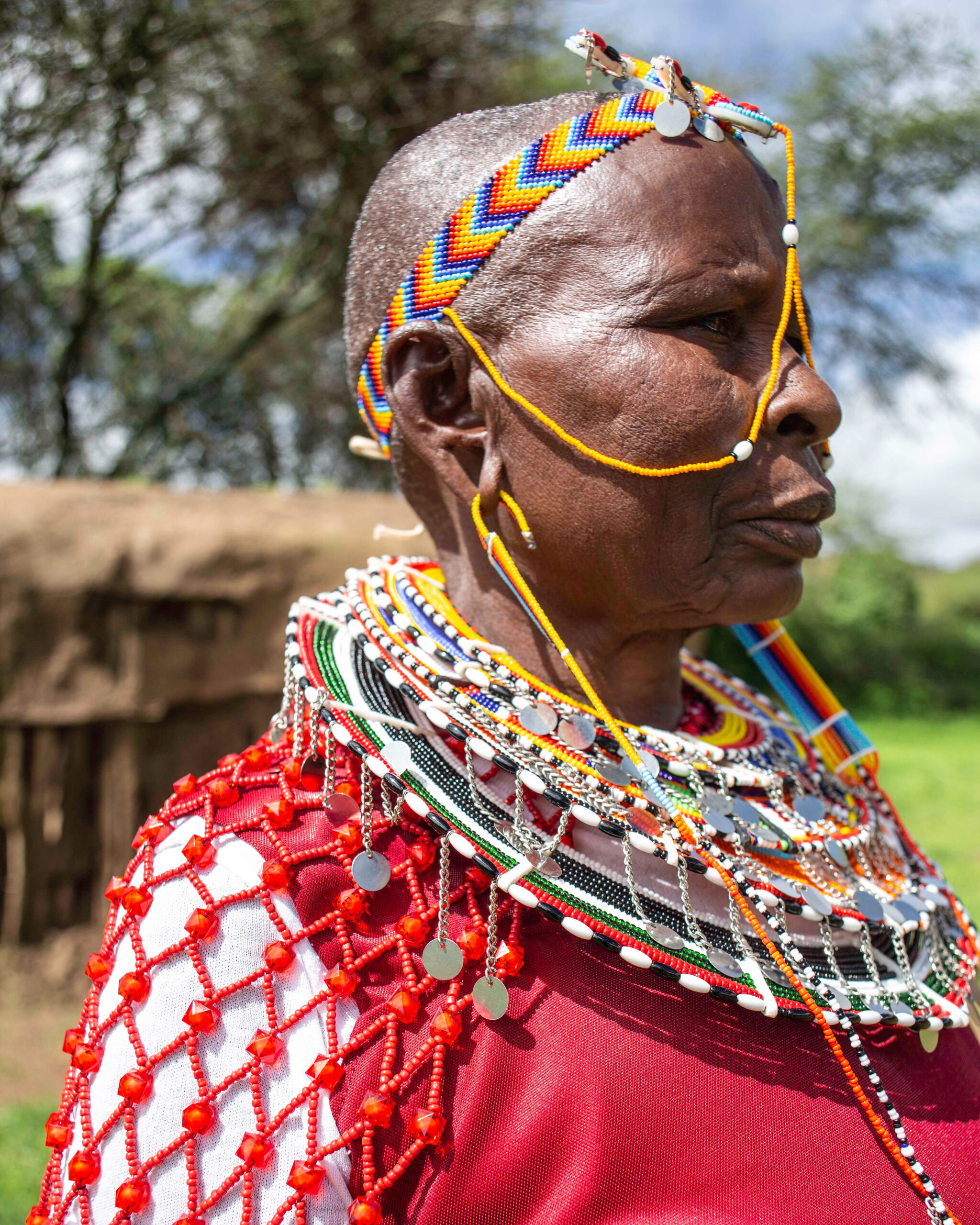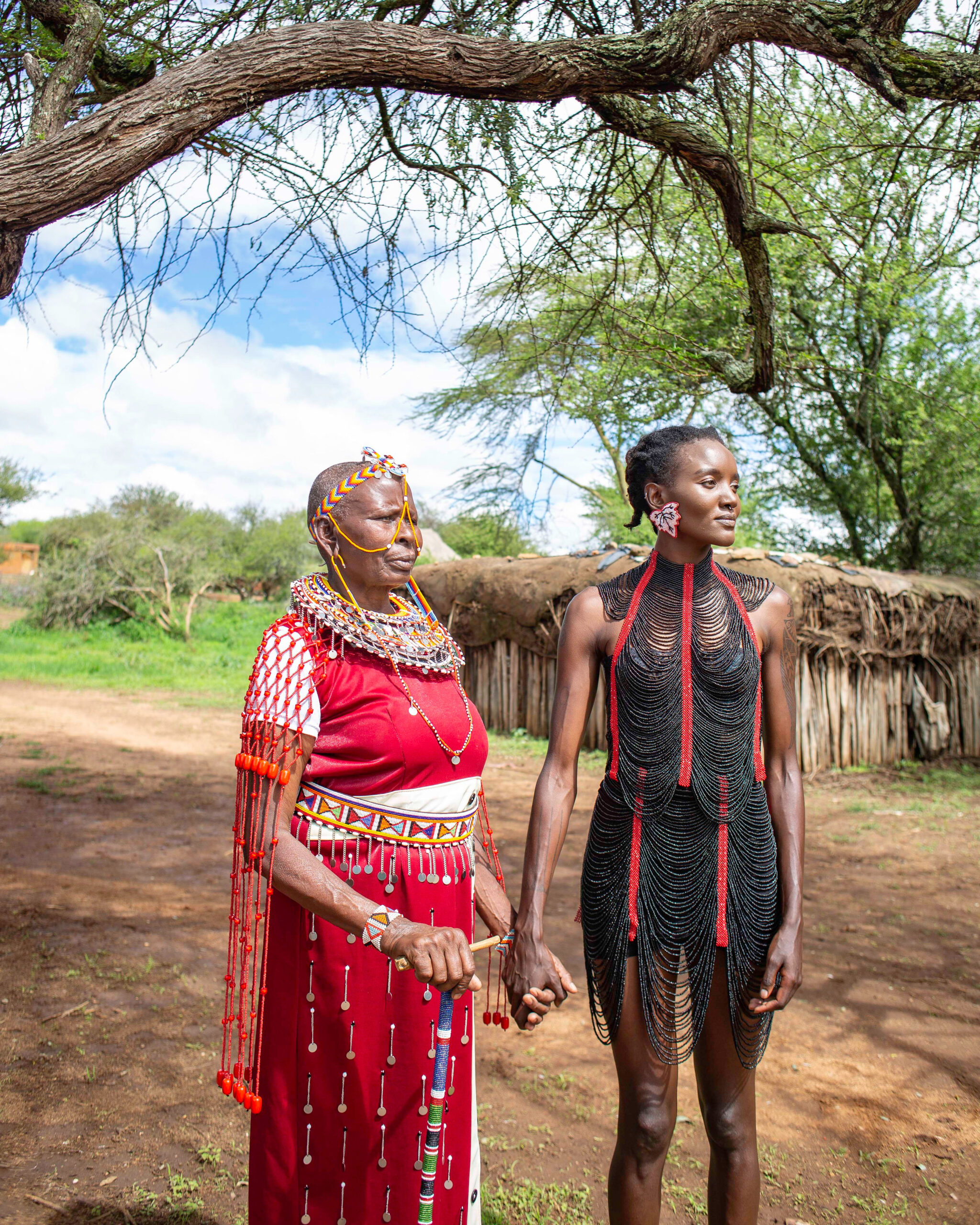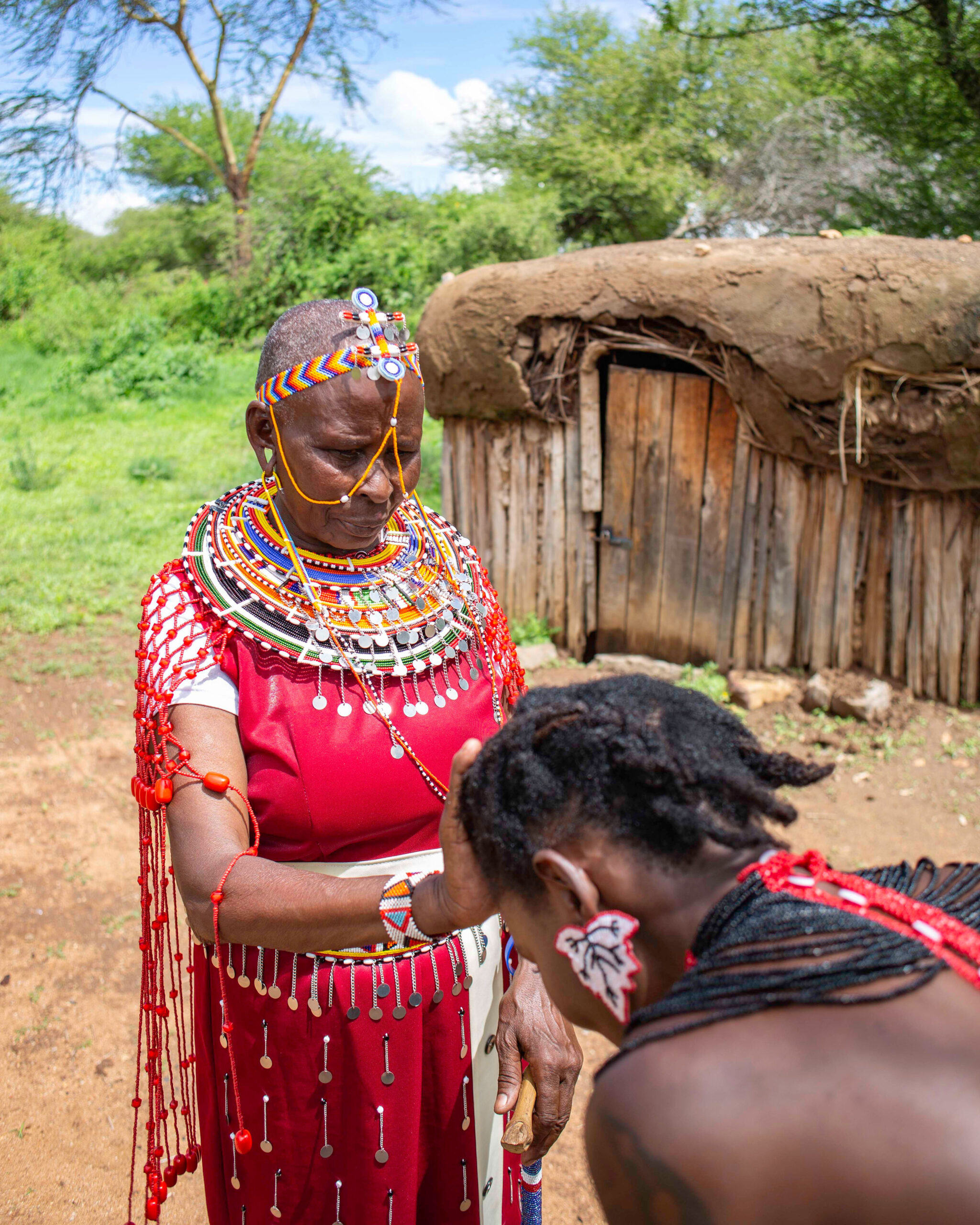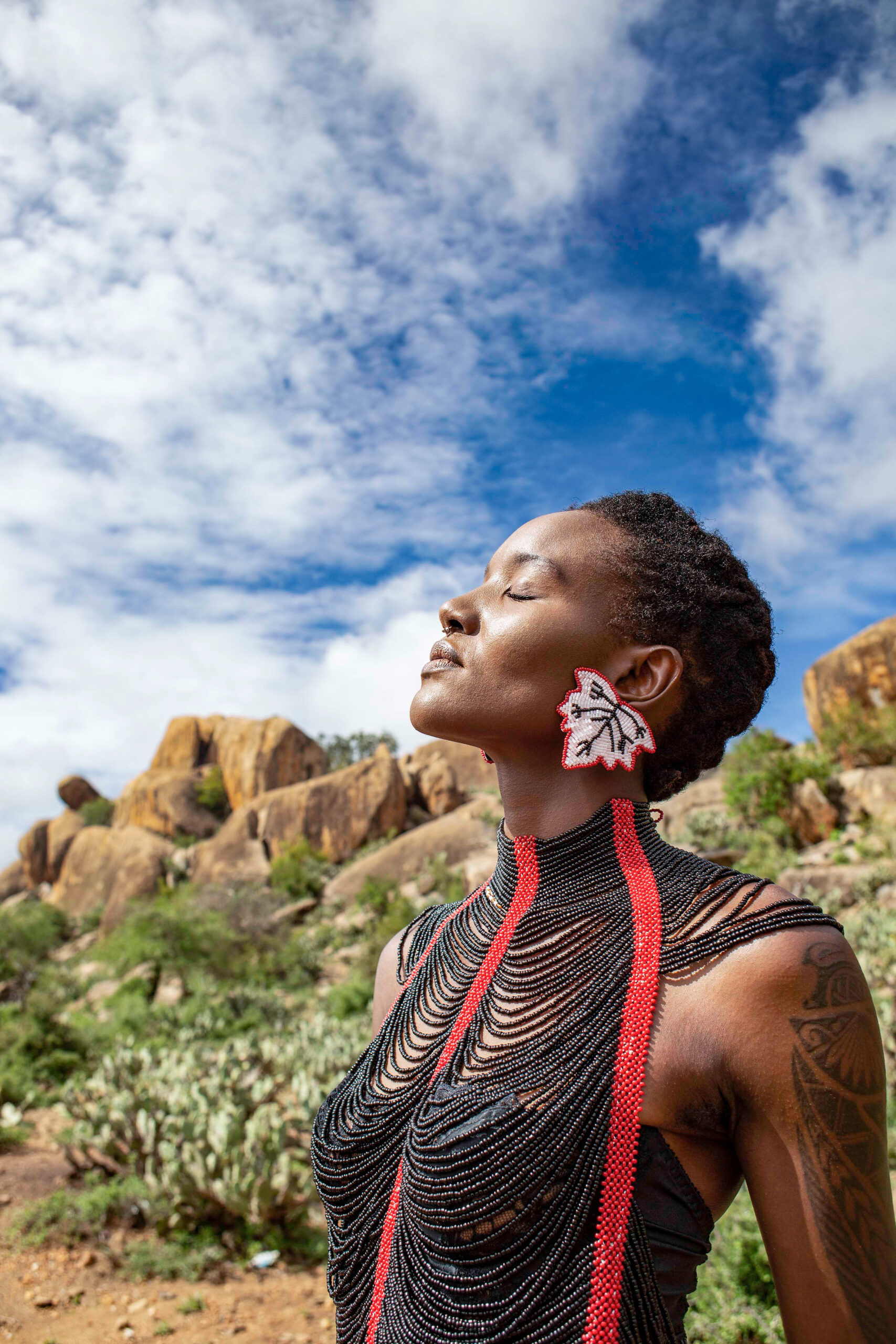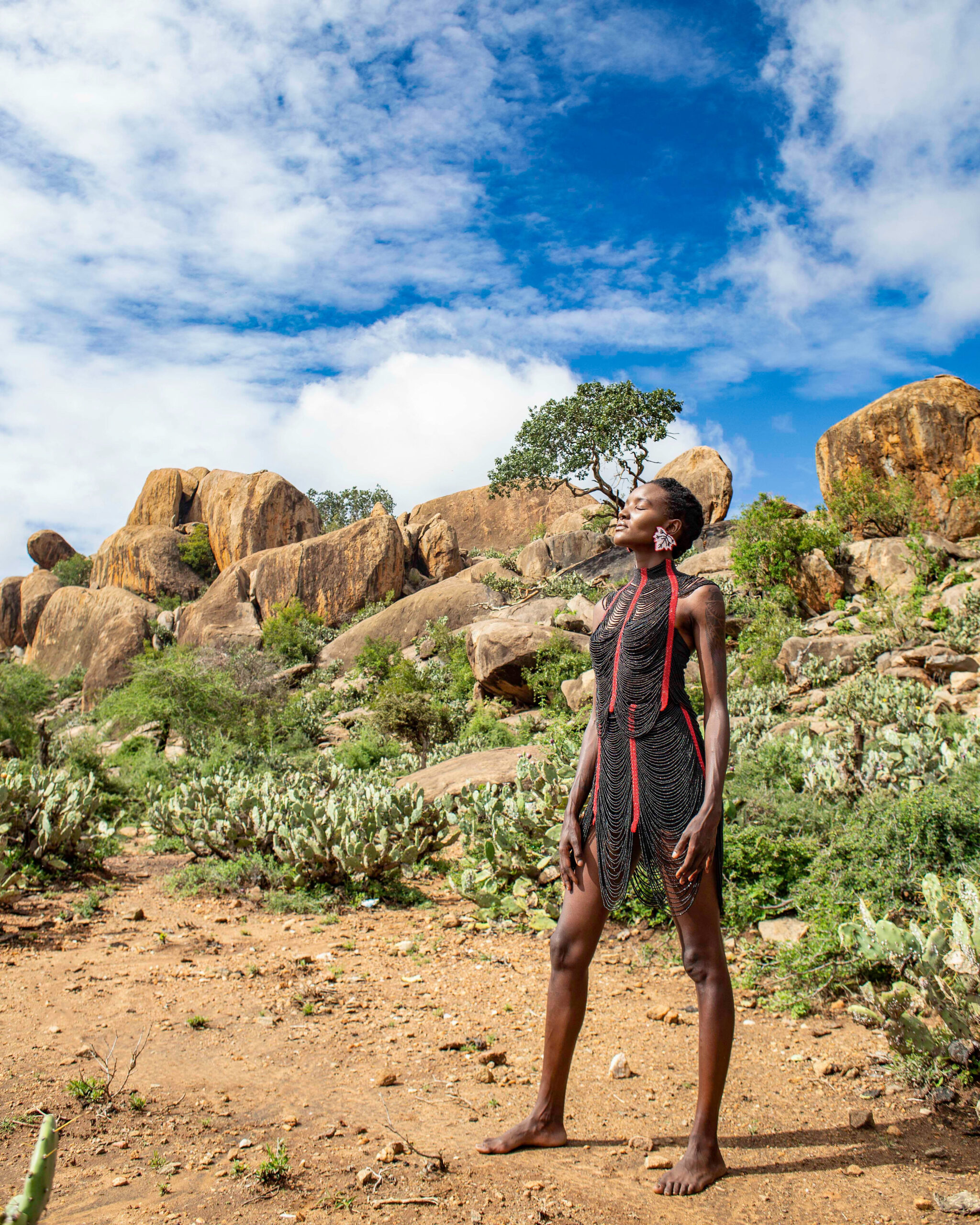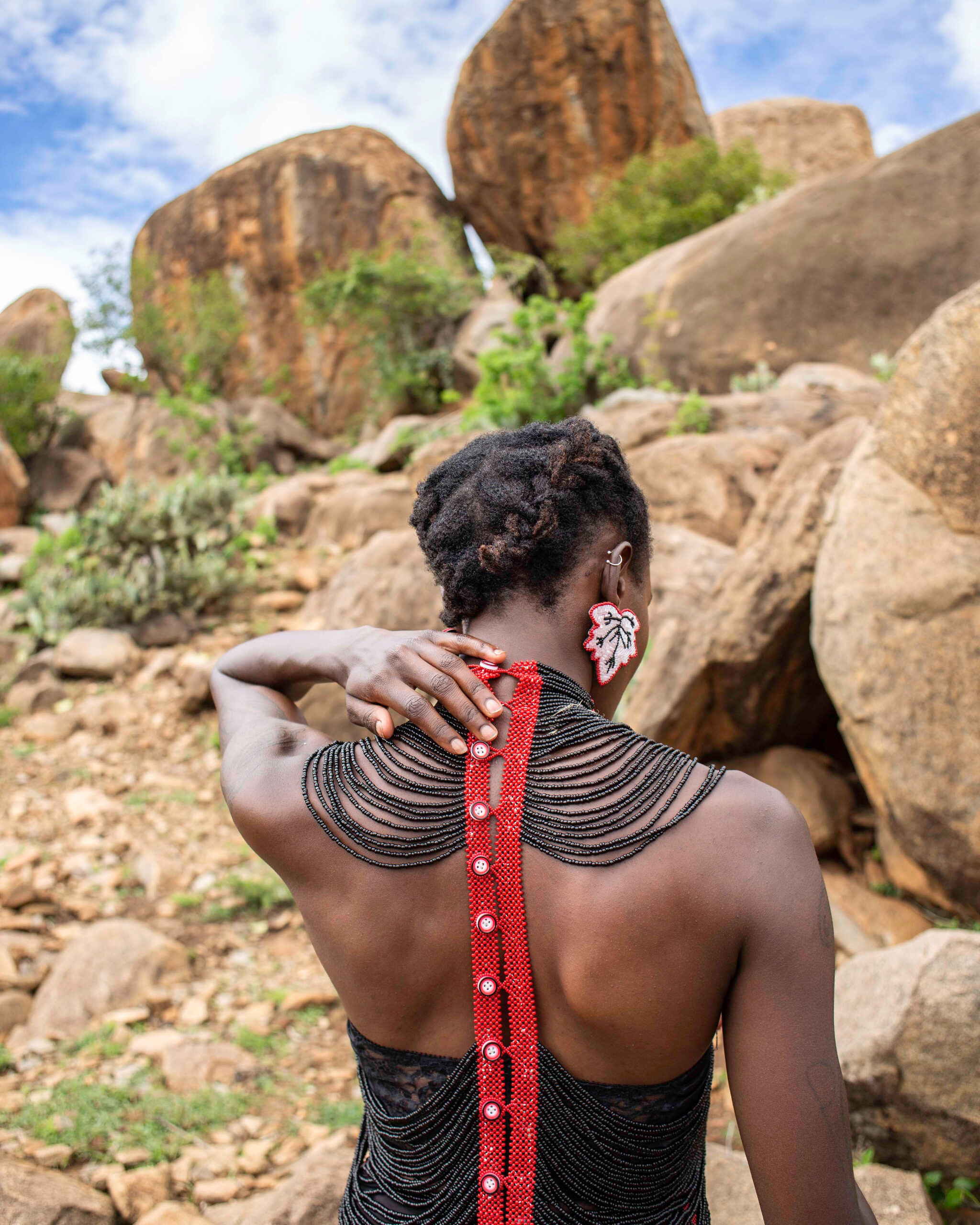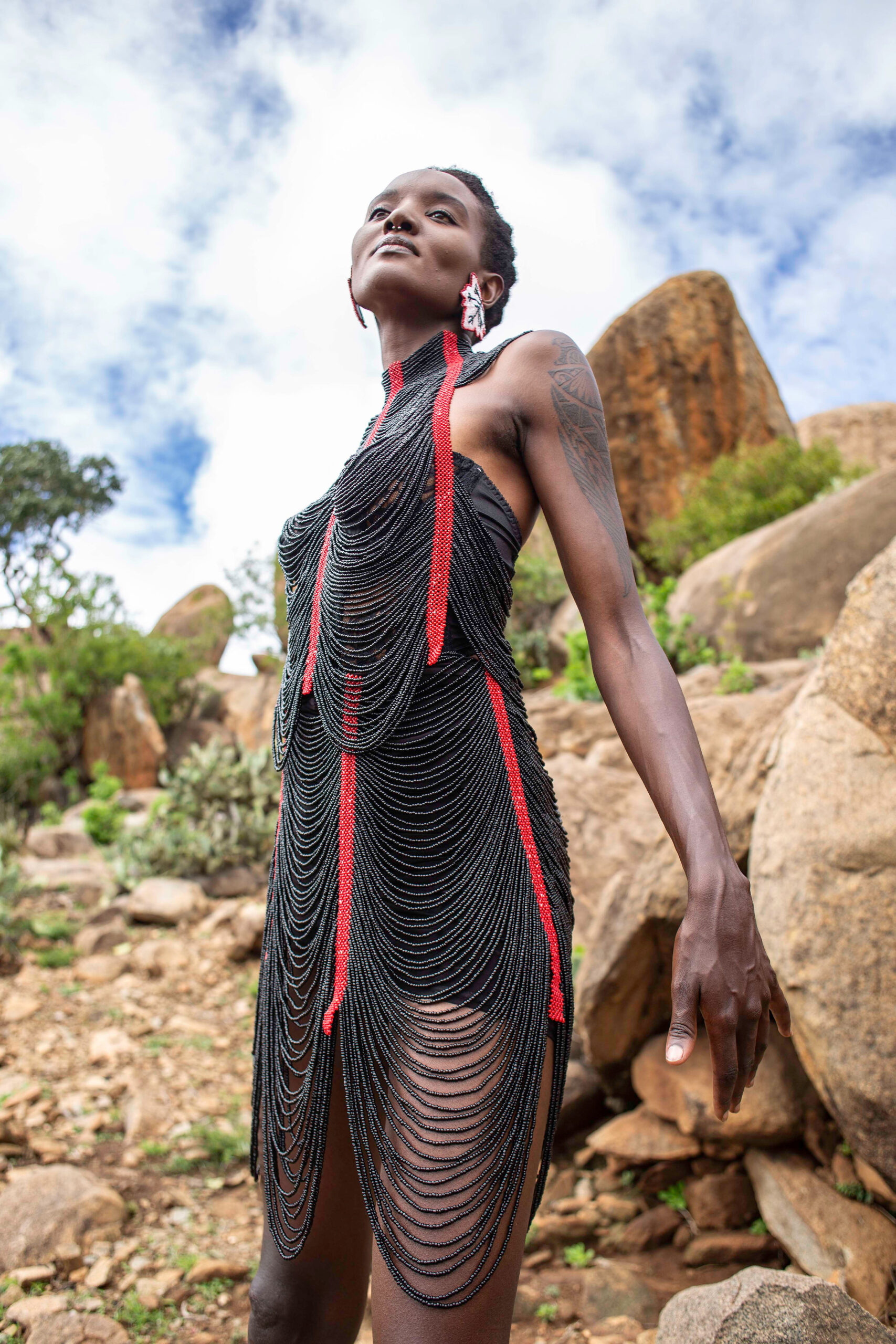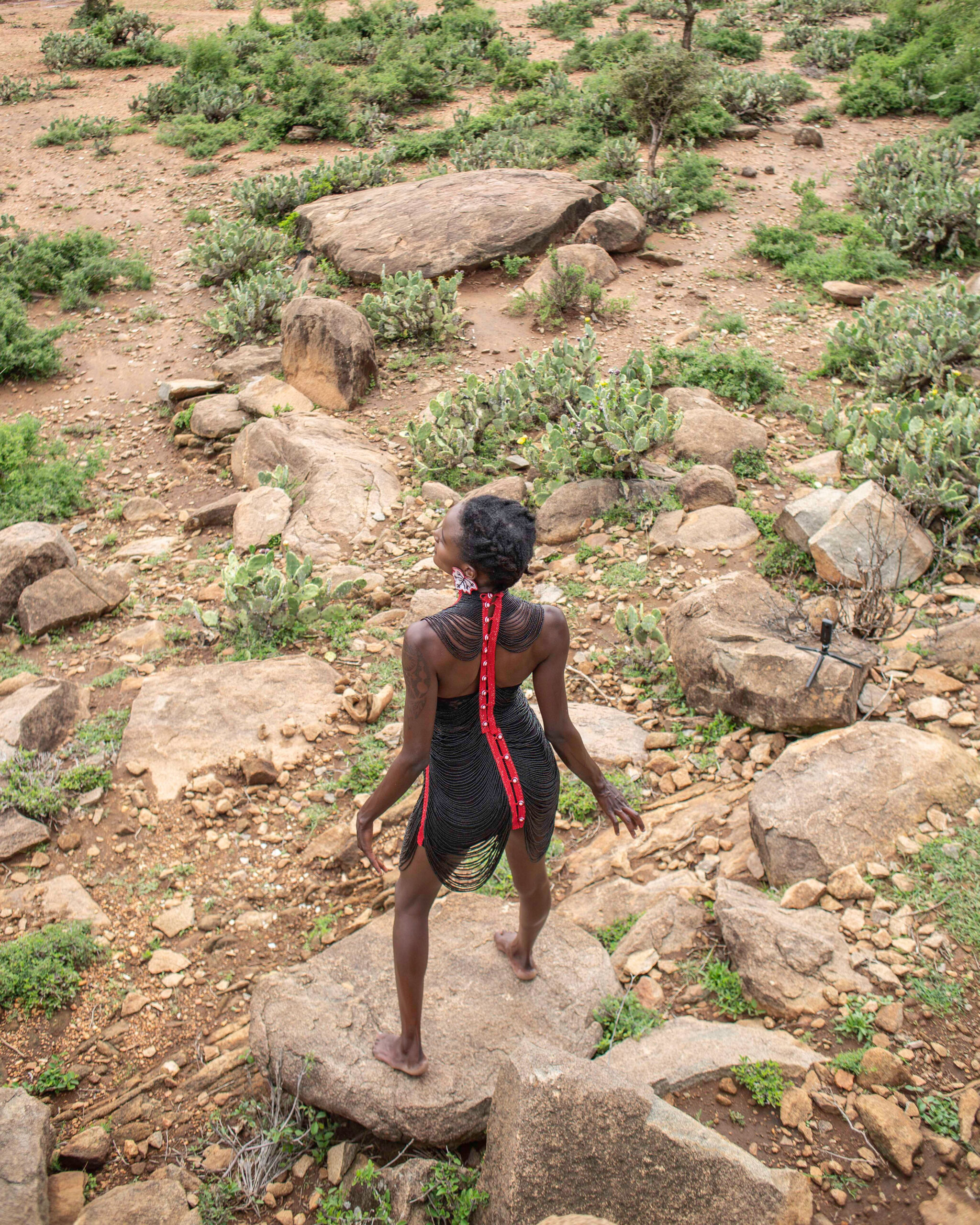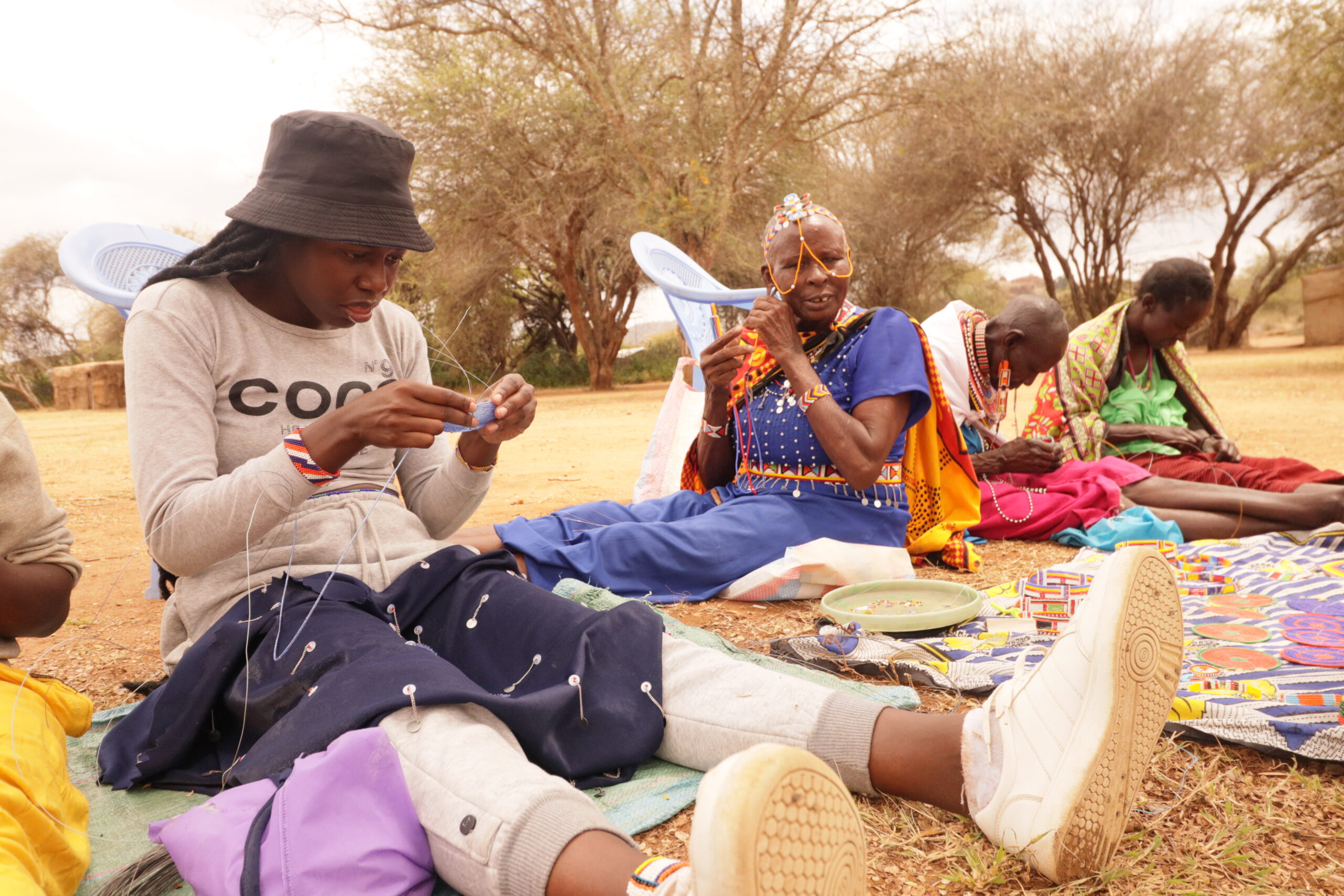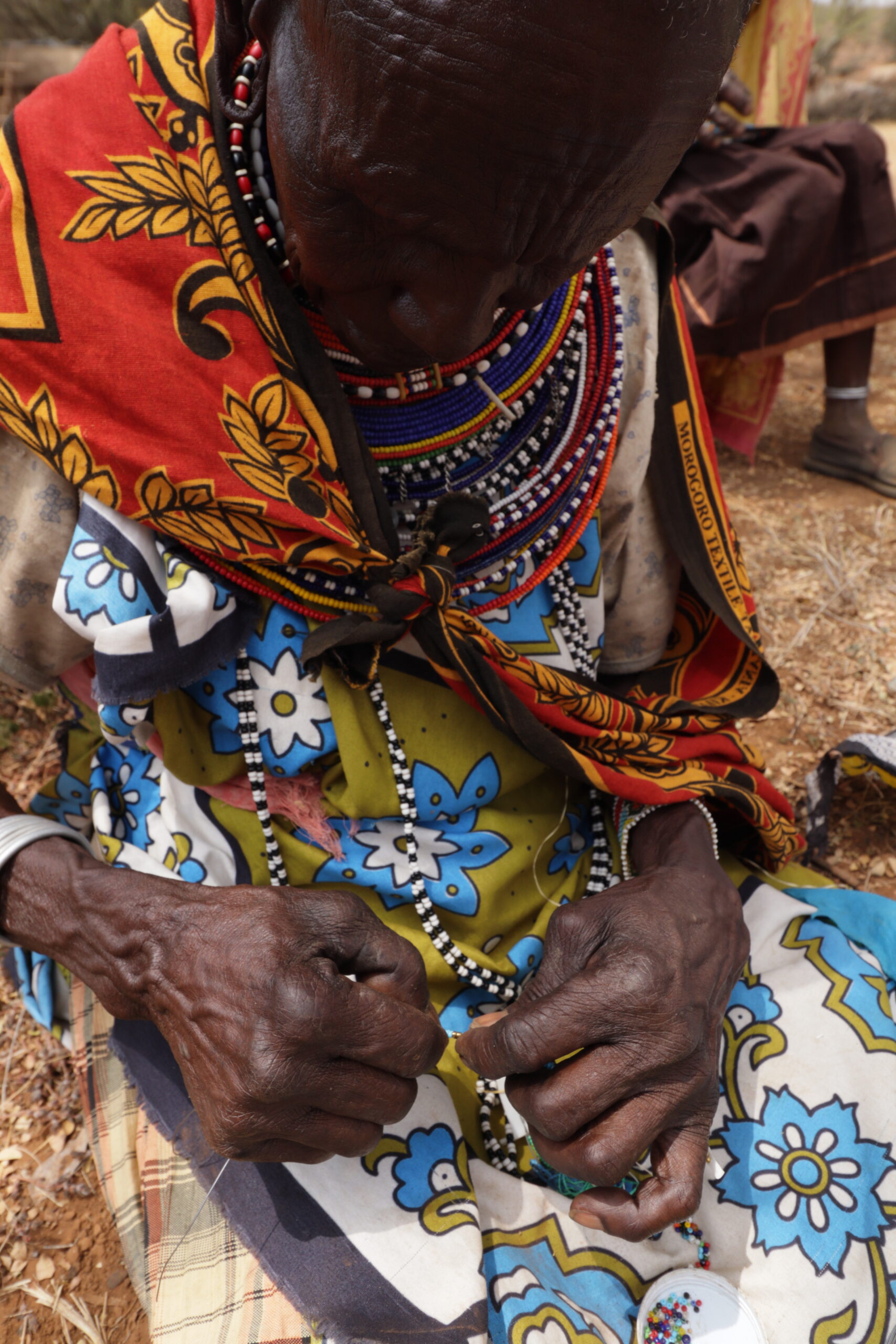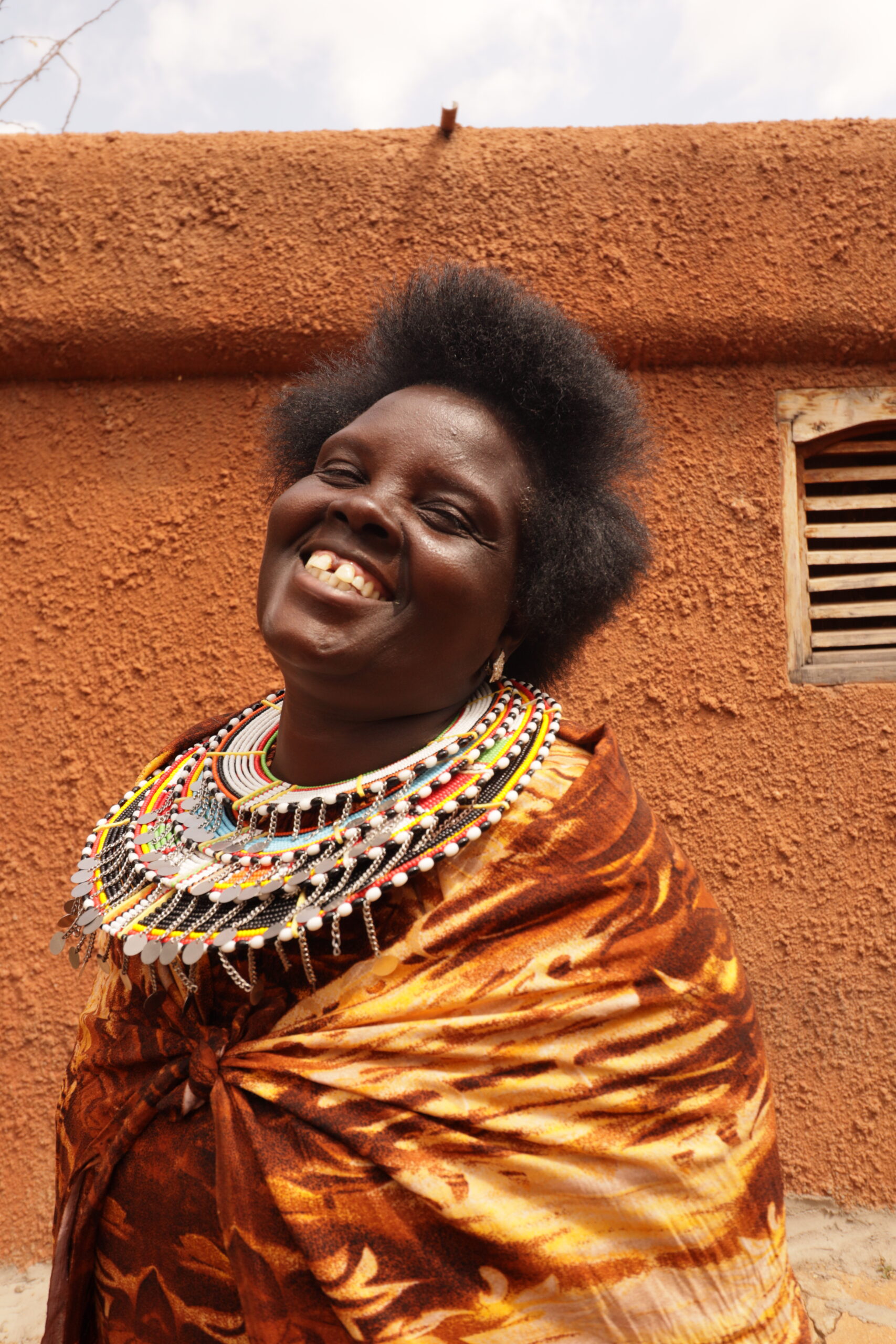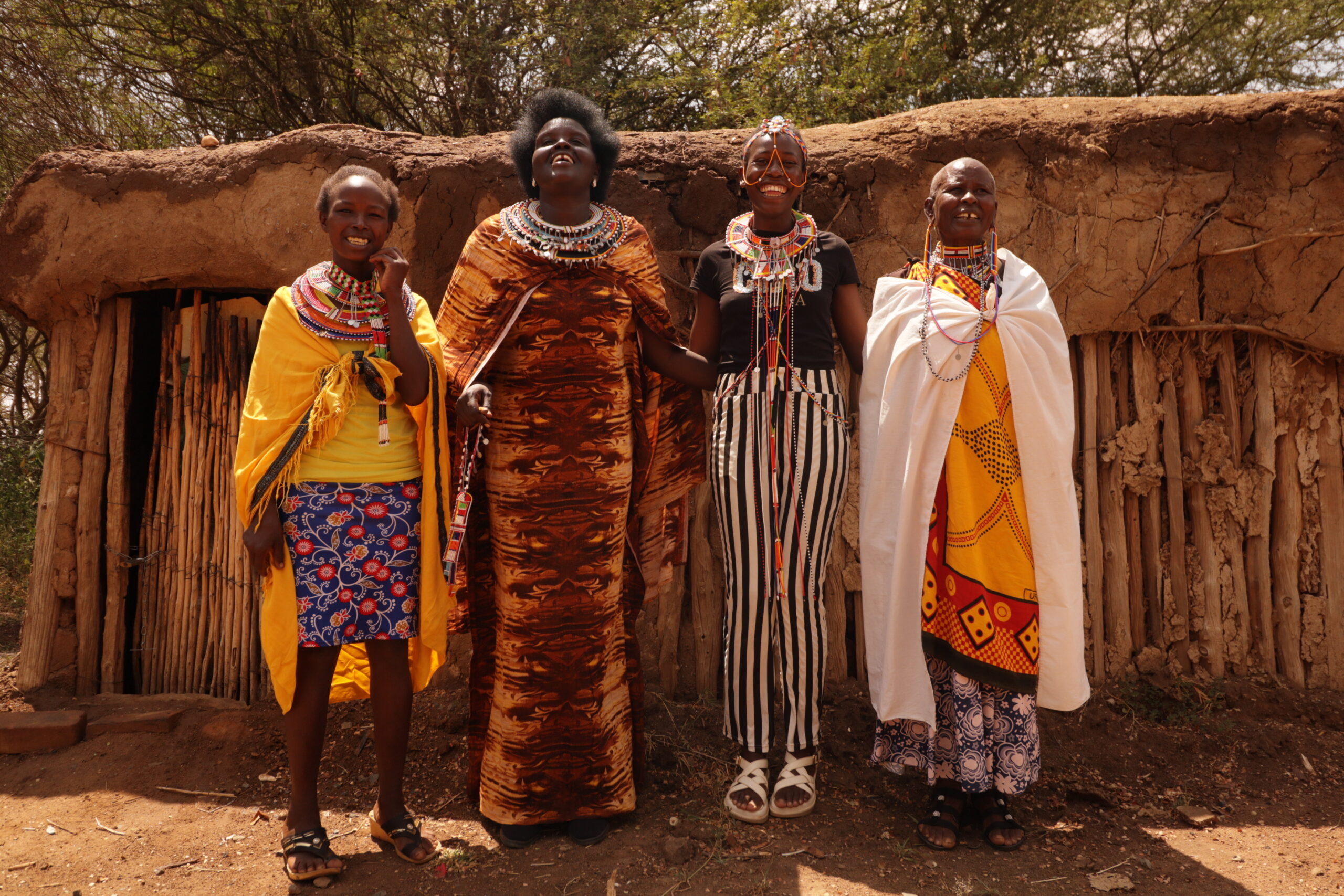The Saen Project goes deep into Maasai culture, highlighting the enormous impact traditional beading has on Maasai women’s lives. As Sharon Wendo, the brain behind the project, insightfully observes, “Culture is our identity, and the Saen Project was an exploration of the Maasai culture and the impact beading has on their lives, a skill that has transformed their lives as they fight against harmful practices within their community.” The Saen Project challenges long-held standards by amplifying these women’s voices and appreciating their artistry, while also highlighting the transforming power of self-empowerment via cultural heritage. In this exclusive feature, FAB digs into an enlightening chat with Sharon Wendo, deconstructing the myths surrounding Maasai beads, revealing the inspiration behind the project, and analysing its far-reaching impact on the community.
Credit – Images: Asande @through_my_brothers_eyes / Model: Naitiemu @Naitiemu / Creative Direction: Sharon Wendo @Sharonwendo
FAB: What inspired the SAEN project?
Sharon: The inspiration for the SAEN project came from my experience with the Creative DNA program by the British Council. Having just returned from London, I was deeply influenced by what I saw as a designer. I wanted to create something special that truly reflected my feelings about my brand, especially my emphasis on culture and the importance of African designers telling their stories.
There is often a significant disconnect between what people see online and the reality on the ground. I felt compelled to tell the story of beading, which is a beautiful and underrated skill. As an artist who frequently uses beading in my work, I wanted to delve into its history and significance.
Initially, I planned to explore the beading traditions of three Kenyan tribes, but due to time and resource constraints, I focused on just one—the Maasai tribe. I aimed to understand and showcase the history and cultural impact of Maasai beading on the community.
FAB: Please shed light on some of these disconnections between what’s online and what’s on the ground. How has the SAEN project addressed them?
Sharon: Many of us have misconceptions about different tribes, especially when we haven’t experienced their cultures firsthand. For instance, there are troubling cultural practices among tribes, such as child marriages in Northern Kenya and female genital mutilation (FGM) in some areas. We are aware of these issues, but our understanding is often limited. When entering these communities, I had my own misconceptions and didn’t know what to expect.
Upon visiting the Maasai community, I discovered an incredible cultural centre run by women. This centre is actively fighting against harmful practices like FGM and child marriage because they understand the negative effects on women and society. It was empowering to see these women finding their voices and asserting themselves in a traditionally patriarchal society.
The Maasai women at the cultural centre have achieved financial empowerment through activities like beading, farming, and performing traditional dances. Financial independence has enabled them to make more decisions for themselves and their children. One of the most impactful stories I encountered was that of an elderly woman, nearly 70, who used to perform female circumcisions. After the cultural centre opened, she stopped the practice and turned to beading full-time. She now encourages other women to abandon FGM, highlighting its harmful consequences.
The SAEN project showcases how beading—a single, powerful craft—has transformed lives and shifted perspectives within the Maasai community. The women are now more empowered and vocal, sharing their culture and experiences. This cultural centre has become a beacon of hope and change, demonstrating that meaningful empowerment is possible through economic opportunities and community support.
Credit – Images: Asande @through_my_brothers_eyes / Model: Naitiemu / Creative Direction: Sharon Wendo
FAB: Why beads? What’s the cultural significance of beads within the Maasai community?
Sharon: When you delve into Kenyan history, especially in terms of fashion and garments, you’ll see that Kenya is not traditionally a textile country. Our history is rich with ornamental accessories and jewelry. Initially, we used seeds and shells to make these accessories. It was only after the arrival of the Indians that we started using glass beads. Before that, seeds were our beads, and they were all about adornment. This adornment holds significant cultural importance.
In Maasai culture, beads have profound meanings. For instance, married women wear specific necklaces, while unmarried girls wear different ones. There are also beads for women with sons who are warriors. Each piece has its own significance. Beading is more than just a craft; it is deeply woven into the cultural fabric of the community. It symbolises identity, status, and heritage.
More Like This:
Creative DNA Africa: Introducing Sharon Wendo and the Epica Story
Culture, Not Fashion, Is The Milanese Attitude
Kenyan destinations for a romantic getaway with that special someone
Paris Couture Week: Tony Ward Couture presents Nymphs Rebirth for FW 24/25
FAB: What are some of the biggest challenges you faced in implementing the SAEN project?
Sharon: I can’t take full credit for the project’s success because the real work has been done by the women in the community. They requested land in a society where land is usually owned communally and decisions are made by a committee. Remarkably, the community granted these women 40 acres of land to pursue their initiatives. Once they had the land, they began beading, farming, and engaging in various activities.
Empowering women in this community has had a significant ripple effect. When women become financially independent, the positive impact extends to their entire households. The women are now earning their own money, which helps them pay school fees and contribute to their family’s income. This financial empowerment also positively affects the men, who are now more open to financial and literacy classes themselves. The change in this one community is inspiring others to adopt similar practices.
The Maasai women faced significant challenges, especially in building the cultural center. Initially, there must have been resistance from those who couldn’t see their vision. However, the positive outcomes are now evident in households and the broader community. While the journey hasn’t been easy, the impact of their efforts is clear, showing the transformative power of empowering women even in a traditionally patriarchal society.
Credit – Images: Asande @through_my_brothers_eyes / Creative Direction: Sharon Wendo
FAB: Is there a way your brand, Epica Jewellery, is helping Maasai women access the market beyond just production training?
Sharon: Absolutely. When I started this project, my primary focus was to avoid exploitation. I’ve seen too much exploitation of Indigenous communities, particularly those involved in beading. People often take their crafts and sell them at significantly higher prices, and the artisans never see the benefits. For me, information is powerful. With the right information, people gain confidence and autonomy.
Epica Jewellery is a small, eco-friendly brand, so financial support has its limits. However, empowering these women with information can have a substantial impact. My goal was to highlight the history of beading within this specific community and show the transformative effect it has on Maasai women. By sharing their story, I wanted to give people direct access to these artisans, enabling them to purchase directly from the Maasai women instead of going through a middleman. I believe direct interaction is more ethical and impactful.
The Maasai cultural centre is a place where people can learn about the community and their crafts. By visiting, buyers can support the artisans directly. This approach not only benefits the women financially but also raises awareness about the value of their work. The internet has been a tremendous asset for my business, and I see potential for the Maasai women to leverage it similarly. Many younger Maasai women are already online, consuming content on platforms like TikTok. They need to start sharing their work and stories online to reach a broader audience.
It’s essential to change the perception of beading as a low-value craft. Beading is an incredibly intricate and valuable skill, akin to couture. When people understand and appreciate the value of handmade items, they’re willing to pay for what these crafts are worth. This shift in mindset can help the artisans set fair prices for their work, ensuring they are fairly compensated.
For me, the project was about more than just beading. It was about access to information and facilitating direct connections between buyers and artisans. By doing so, we can bypass middlemen and ensure the women benefit directly from their labor. Additionally, 20% of every piece sold from this collection will go back to the community, further supporting their growth and empowerment.
Credit – Images: Asande @through_my_brothers_eyes / Creative Direction: Sharon Wendo
Sharon: I hope the Saen Project can help change our mindset as Kenyans and Africans. We have a rich tradition of handmade crafts in our tribes, but we often don’t value or consume these products as much as we should. Shifting this mindset is crucial. We need to appreciate and support our own creations, which will transform the creative sector. By consuming our own products and telling our stories accurately, we can foster a deeper appreciation for our cultural heritage and promote sustainable development within our communities.
FAB: I’m wondering, what exactly is the story?
Sandra: Here’s my perspective: I come from the western part of Kenya, from a tribe called Luo. If you asked me about my culture, I could tell you very little because many aspects have been lost over time. Living in a city often puts you in a bubble, disconnected from your own culture, which is not ideal. Our culture is our identity. When you understand your culture, you have a richer life experience. Without that knowledge, you tend to adopt other cultures more readily.
Kenyans were colonised by the British, and their influence is still evident, especially in Nairobi. Our official languages are English and Swahili, but it’s not uncommon to see people feeling ashamed to speak Swahili, which is absurd. This is a result of distancing ourselves from our own culture in favour of westernisation. People here consume American and European culture enthusiastically but feel embarrassed to embrace their cultural heritage because they don’t know it well.
This is why creators and artists have such a significant impact when they tell stories through music, art, or fashion. As creators, it’s essential to reconnect with our roots, explore our tribal histories, and share those stories. Our cultures are beautiful and powerful, with so much to offer. We need to tell our own stories to preserve our identity. Europeans constantly share their culture with the world, and we should do the same with pride.
No one questions a French or Italian person for having an accent, but as an African, you’re often pressured to speak ‘proper’ English. That mindset needs to change. We should embrace our accents and our heritage without feeling the need to conform to Western standards. Telling our stories authentically is crucial because if we don’t, someone else will, and it won’t be the same. Stay up to date on the latest in fashion, arts, beauty, and lifestyle by following FAB L’Style Magazine.
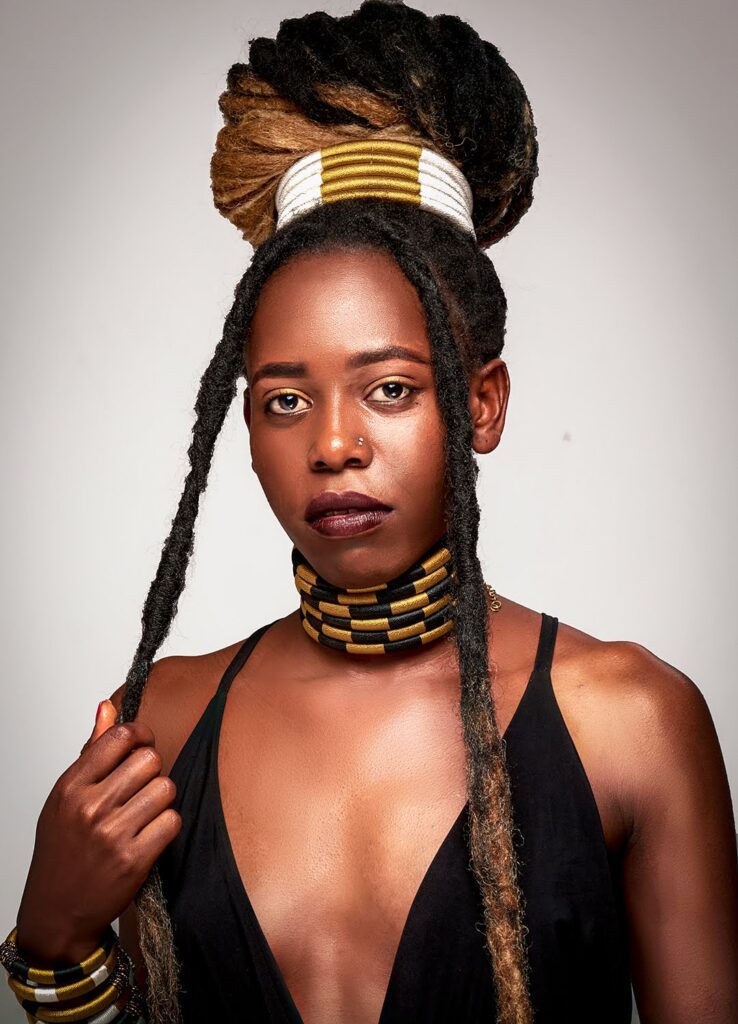
FAB: Wonderful! Reflecting on the project now, how would you sum it up in three words?
Sandra: Impactful, informative, and visionary.
FAB: Are there any notable partners or contributors to the success of the project?
Sandra: The British Council was a significant partner, sponsoring the entire project. The community, known as Twala Tenebo, was also crucial, especially the women, who were the main contributors. I created a docu-series about this project, which is available on YouTube, to provide a perspective on the impact of beading. The series features Maasai women from three generations—Gen Z, millennials, and baby boomers—sharing their stories. It’s essential to let them tell their own stories.
Rosemary Nenini, the lady who manages the cultural centre, has been incredible, transforming many lives in the community. The British Council and the community committee played vital roles in the project’s success.





